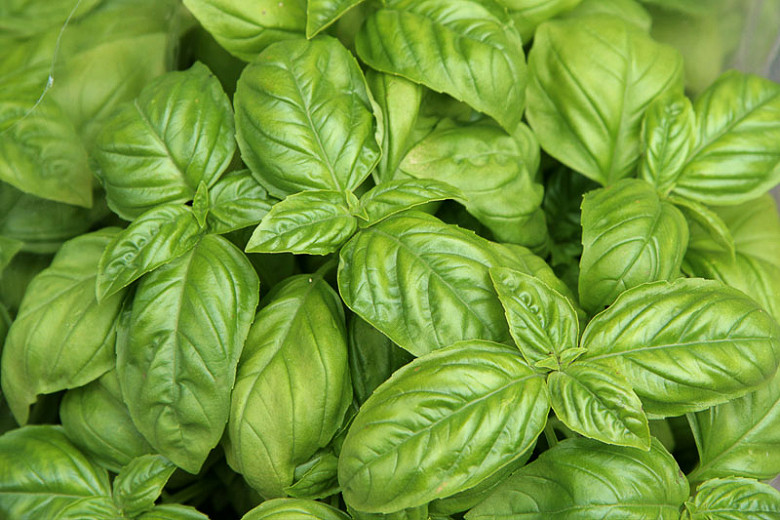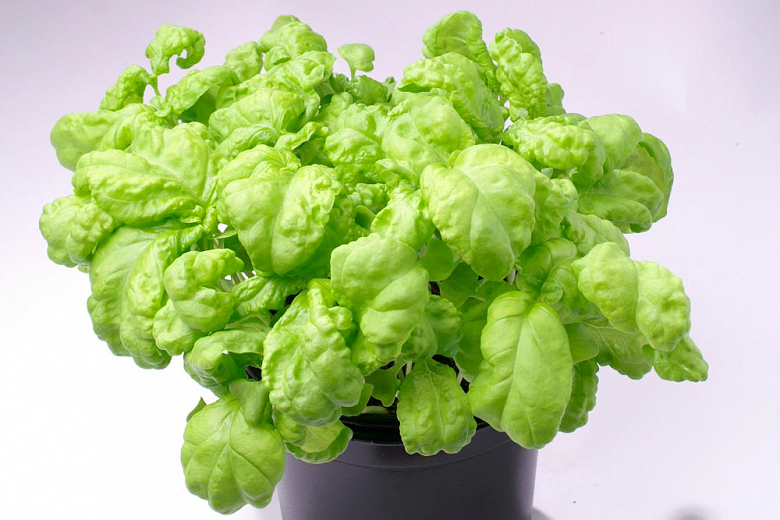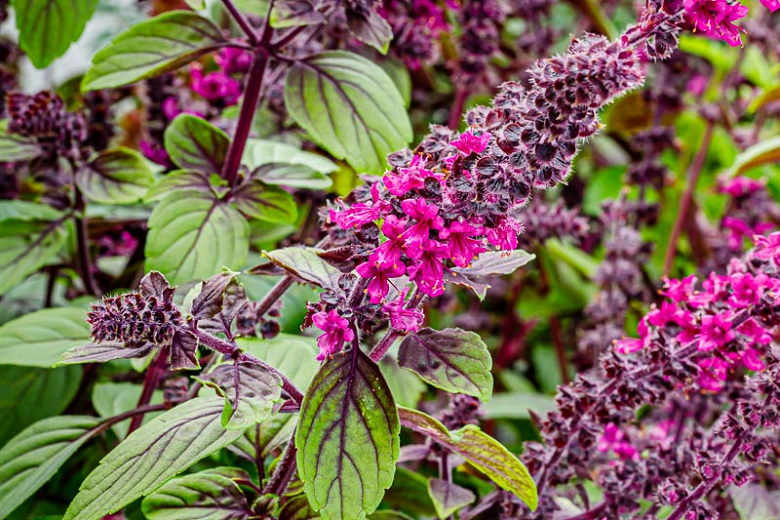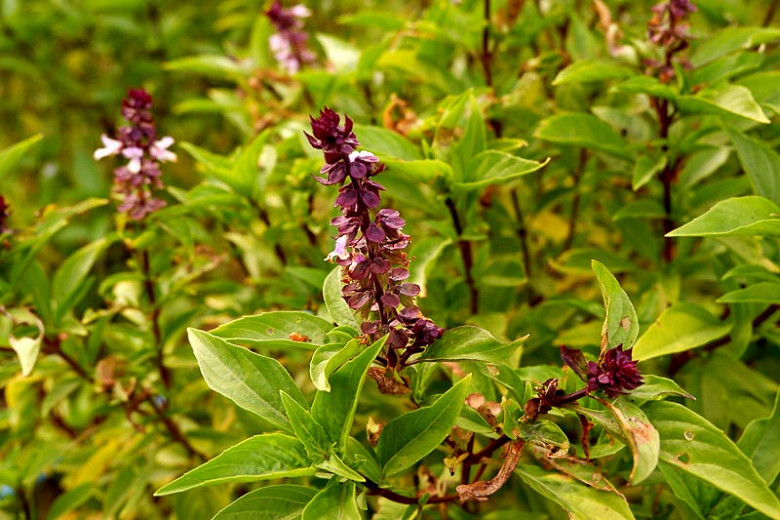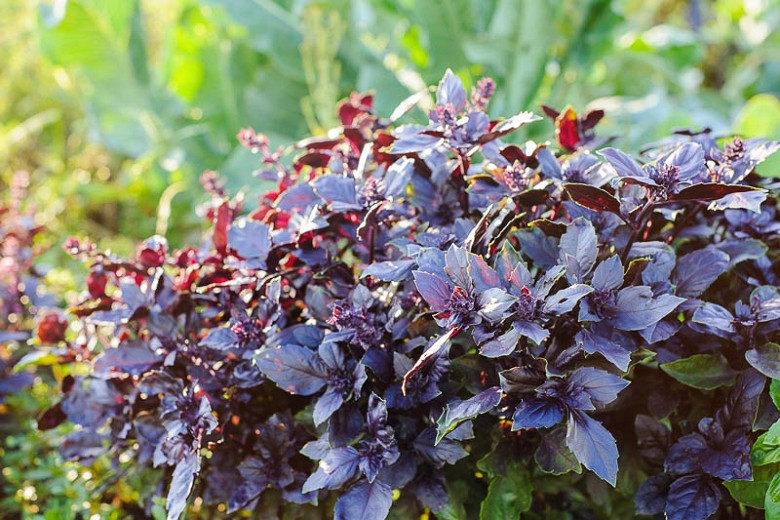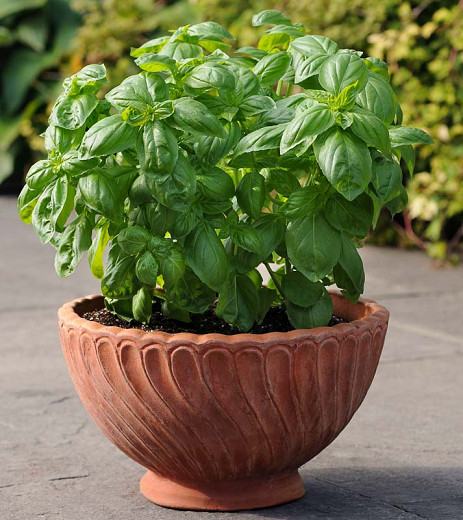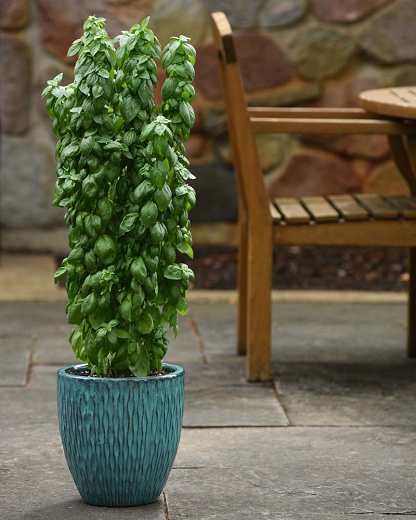Ocimum basilicum (Sweet Basil)
One of the great culinary herbs, Ocimum basilicum (Sweet Basil) is an annual or biennial with highly aromatic, bright green, elliptic leaves and spikes of small, tubular white or pink-tinged, lipped flowers arranged in whorls.
One of the great culinary herbs, Ocimum basilicum (Sweet Basil) is an annual or biennial with highly aromatic, bright green, elliptic leaves and spikes of small, tubular white or pink-tinged, lipped flowers arranged in whorls. Used extensively in European and Asian cooking, Sweet Basil is one of the most popular herbs for growing at home, both in gardens and containers. Reflecting its popularity, there are many varieties to pick from in terms of size, leave, foliage color or flavor, including clove, lemon, lime, anise, spice, cinnamon and thyme.
- Grows up to 18-24 in. tall and wide (45-60 cm).
- Performs best in light, well-drained, fertile soil in a sheltered position in full sun. Water freely in summer. Basil is extremely frost sensitive.
- Harvest mature leaves for fresh use at any time.
- Although Basil naturally repels mosquitoes and flies, it attracts bees, butterflies, and other beneficial insects to the garden.
- Basil is a valuable addition to the vegetable garden and an excellent companion plant for tomatoes, peppers, parsley, lettuce, asparagus, beans, beets, cabbage, eggplant, marigolds, potatoes, or oregano. Avoid planting Basil near Rue (Ruta graveolens) and Sage (Salvia officinalis).
- While Basil makes a colorful and flavorful addition to many dishes, it can also provide some health benefits. Basil contains many vitamins and minerals, as well as antioxidants and essential oils. However, all these great compounds disappear during the process of drying, so opt for fresh basil whenever possible to enjoy the most benefits. Basil can help reduce inflammation in the body, lower blood pressure, fight free radicals, and reduce high blood sugar levels. Basil has antibacterial properties.
- No serious pest or disease issues. Keep an eye out for slugs, snails, and powdery mildews. Deer and rabbit resistant.
- Pinch out flowerheads as they appear to ensure continued leaf growth. Cut back after flowering.
- Propagate by seed in gentle heat in spring under glass or indoors.
- Native of Africa and Asia.
Requirements
| Hardiness | 2 – 11 |
|---|---|
| Climate Zones | 1, 1A, 1B, 2, 2A, 2B, 3, 3A, 3B, 4, 5, 6, 7, 8, 9, 10, 11, 12, 13, 14, 15, 16, 17, 18, 19, 20, 21, 22, 23, 24, A1, A2, A3 |
| Plant Type | Annuals, Herbs |
| Plant Family | Ocimum – Basil |
| Exposure | Full Sun |
| Season of Interest | Spring (Late)Summer (Early,Mid,Late)Fall |
| Height | 1' – 2' (30cm – 60cm) |
| Spread | 1' – 2' (30cm – 60cm) |
| Spacing | 18″ – 24″ (45cm – 60cm) |
| Water Needs | Average |
| Maintenance | Low |
| Soil Type | Loam, Sand |
| Soil pH | Acid, Alkaline, Neutral |
| Soil Drainage | Well-Drained |
| Characteristics | Fragrant |
| Tolerance | Deer, Rabbit |
| Attracts | Bees, Butterflies |
| Garden Uses | Beds and Borders, Patio and Containers |
| Garden Styles | Informal and Cottage |

